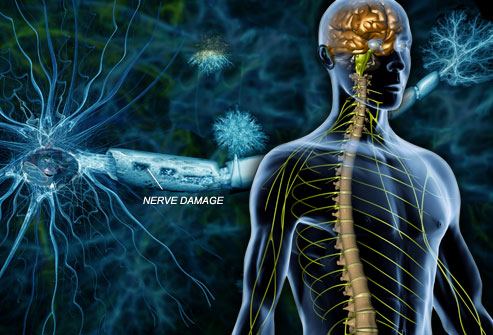Unravelling the Mystery of Neuropathy to Manage the Illness
Posted: July 2, 2014
Peripheral neuropathy…neuropathy…nerve damage – none of these may be terms you are familiar with. Neuropathy refers to diseases of the peripheral nervous system, and it affects over 20 million — or 1 in 15 — adults or children in the US.
What is Neuropathy?
According to The Neuropathy Association, neuropathy results when the peripheral nerves—those nerves that carry signals back and forth between our brain and the rest of our body—are damaged. This nerve pain impacts the body’s ability to communicate with itself: it’s as if the body’s wiring system has gone haywire. Managing the illness begins with first understanding it – and getting a good diagnosis and treatment plan in place.
What are the Symptoms?
Neuropathy’s early warning symptoms include: numbness, tingling, imbalance, weakness, and pain in the hands and feet. The symptoms also vary depending on the peripheral nerves involved: motor, sensory, and autonomic nerves.
Over 300 people with neuropathy recently helped The Neuropathy Association to create this Neuropathy Word Cloud – a powerful, visual, representation of what it is like to have neuropathy – and help the public better understand the human toll of this disease.
What are the causes?
Of the over 100 known types of neuropathy, diabetic neuropathy represents over a third of all neuropathies, making diabetes the leading cause. A third of neuropathies are “idiopathic” – or of an unknown cause. Other neuropathies include autoimmune conditions, hereditary, cancer or chemotherapy-related, entrapment or trauma-related, and neuropathies related to causes such as toxin-induced, nutritional deficiencies, gastro-intestinal disorders, metabolic diseases, or infectious diseases (including Lyme and HIV/AIDS).
How is it diagnosed?
If you suspect you may have this illness, it is important that you work with your primary care doctor to get a referral to a neurologist specializing in neuromuscular diseases. These neurologists are trained to diagnose and help people with diseases such as neuropathy, muscular dystrophies, and amyotrophic lateral sclerosis, among others. Getting an early and accurate diagnosis is the key to providing symptom management to restore quality of life and stem neuropathy’s progression.
Some tests that may be recommended after a complete neurological evaluation include:
* Electrodiagnostic tests (e.g., electromyograms or EMGs; and nerve conduction studies or NCSs)
* Skin biopsy
* Autonomic tests
More details about what these tests entail can be found here.
How can it be treated?
According to The Neuropathy Association, the only treatments available for the over 100 forms of neuropathy are aimed at treating the underlying medical conditions that cause the neuropathy, or treating the symptoms such as neuropathic pain. None treat the actual nerve fiber dysfunction or fiber loss, or help nerve fibers regenerate. Patients are encouraged to work with their health professionals to address the balance issues, muscle weakness, etc. with physical therapy. It is important to incorporate a multi-disciplinary approach to improve function and quality of life.
There are currently FDA-indicated medications for only a handful of neuropathies, as well as several more medications in clinical research development. For this reason, raising awareness so that more funding will be allocated to neuropathy research for more treatments and cures is critical. It is also important to help family members, friends, and the public at large to better understand neuropathy – this is as much about getting the support, understanding, and care people with neuropathy need as it is about changing the public’s perception of the neuropathy epidemic.
http://www.painpathways.org/unraveling-the-mystery-of-neuropathy-to-manage-the-illness/#sthash.LxtUtcP0.dpuf

No comments:
Post a Comment
All comments welcome but advertising your own service or product will unfortunately result in your comment not being published.